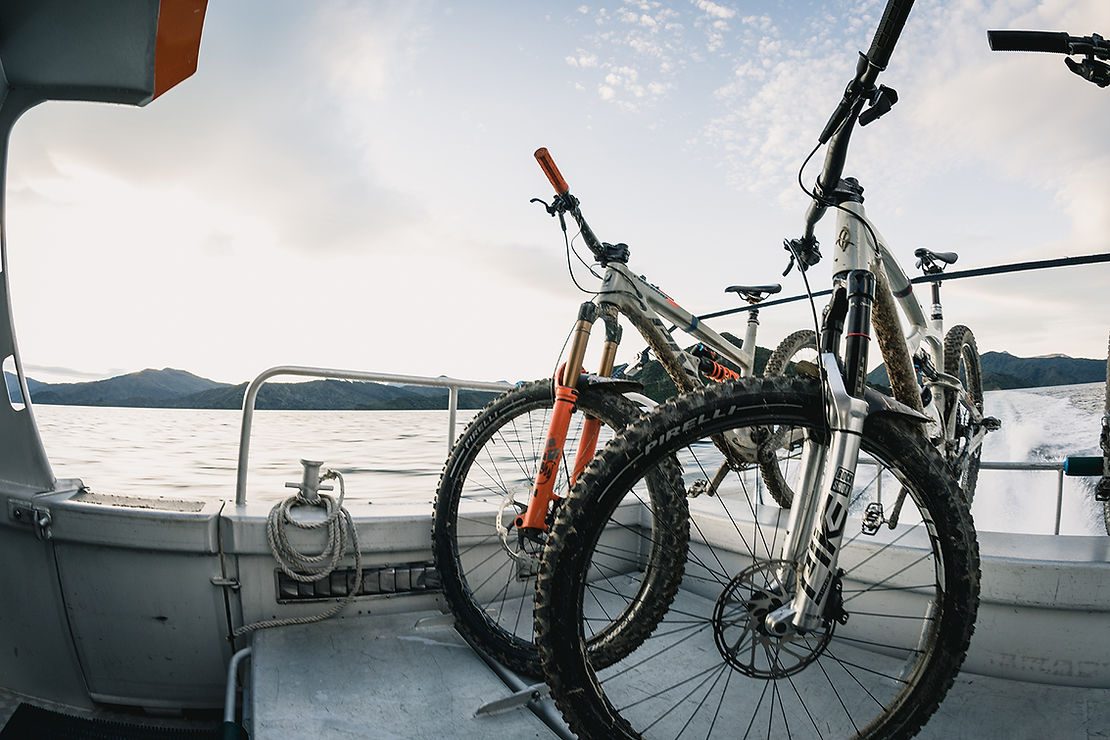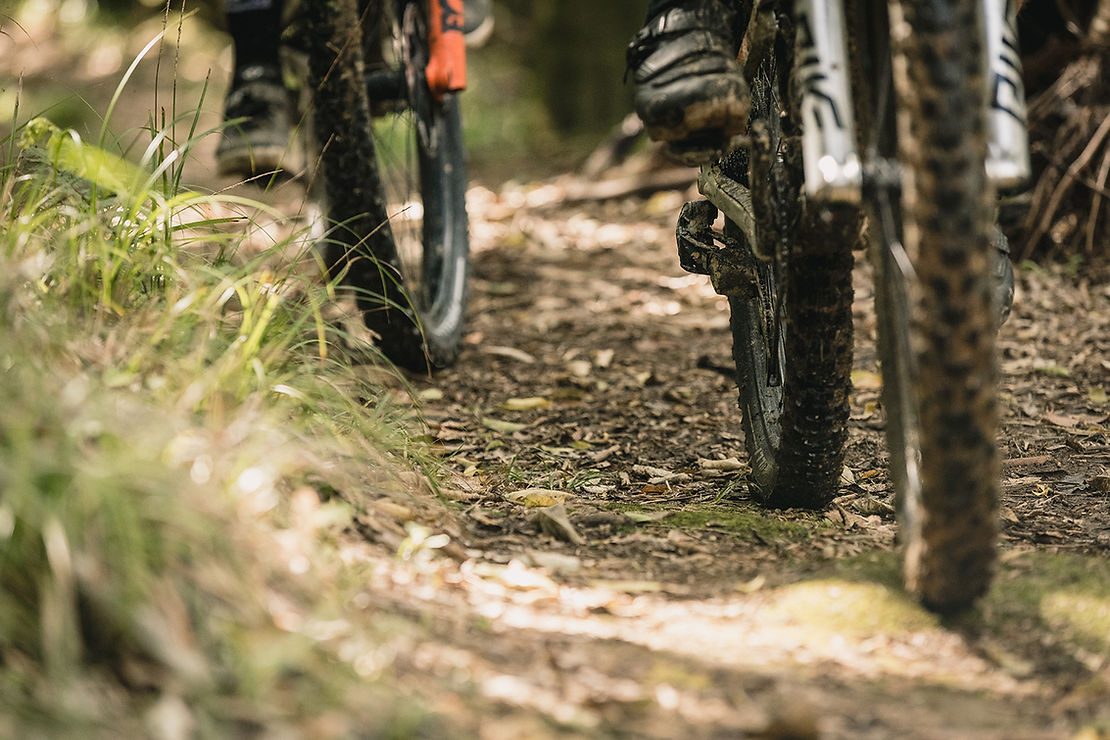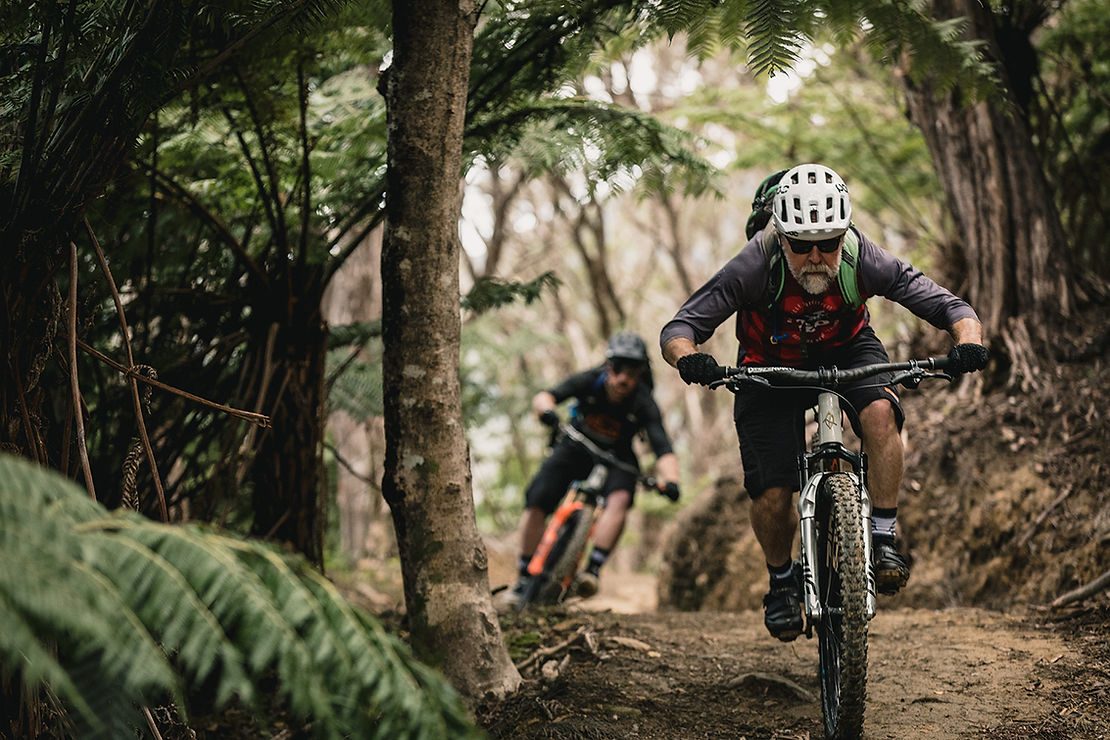Pirelli is a company with massive involvement in just about every competition that involves tyres. The Italian brand makes the only tyre used in F1 and Superbike, and supplies teams competing in WRC rallies, MotoCross, and over 350 other competitions world-wide.
With a pedigree that also includes a history as the top quality maker of racing tyres for roadies, Pirelli re-entered the cycle sport world in 2017. Starting with road race tyres, the company now has a big range of mountain bike tyres, with XC and Trail already in the bag, Enduro ready to go, and Downhill coming in 2021.

A factor that sets Pirelli apart, is their method of product development. Over 2000 people are employed in R&D, and the way they are organised is interesting. The departments working in the different facets of tyre development, work on that aspect of the entire Pirelli range – for example, the chemistry of the rubber on a tyre designed for mountain biking draws on the knowledge of a team who share data from the chemistry used in every application the company works on. In developing their bike tyres, the designers were not constrained by cost, because compared to a car tyre the materials used makes up a smaller part of the overall cost of the product. The design teams could go all out in perfecting their products, and the way the mountain bike tyres are designed is a testament to that approach.
The challenges in creating a mountain bike tyre are generally met with compromise. Light weight is set against durability, and so is the grip factor of the rubber used. Knobs must be tall enough to do their job for the category they are aimed at, and strong enough to resist tearing off or wearing down too fast.

Some companies build a tyre using a hard, strong rubber, coated with a layer of softer compound for maximum adhesion. That results in a tyre that will perform well when new, but once that soft compound is gone the tyre is less than ideal. Other companies push that compromise onto the consumer (that is us). They offer a variety of compounds and leave us to decide whether we want grip or durability. Pirelli use the deep knowledge they have of chemistry to produce rubber compounds which are structurally strong, have optimal surface grip, and will retain the grip performance as the tyre wears.
Pirelli mountain bike tyres are organised in the same way across the entire range – with a letter and colour code to describe their intended application, following the logic used in Motocross:
H in Red means hardpack – small low knobs, designed for speed in the dry.
M in Yellow means mixed terrain – a bit more open, and some more depth to the tread pattern.
S in Blue is designed for soft conditions – a loose surface, or wet conditions, tyre.
R in Green is a rear specific tyre.
There are XC, Trail, Enduro and e-Bike ranges in the usual variety of sizes.

The first pair I got to sample were from the upcoming Enduro range, mounted on my Trek Fuel EX, a 29er. At 2.6” width, with very solid sidewalls, they are not lightweights, with a heft of 1140g per tyre. The front tyre was the S model, designed for loose conditions, with a very open tread pattern. The rear tyre (with a Green R!) has a mostly rectangular block tread pattern, with alternating wide and narrower blocks down the centre and two rows of very widely spaced knobs on the edges. The knobs on the outside edge are sculpted with several levels and notches, as well as small grooves across the face of all the knobs. Tubeless setup was fairly easy, they were a snug fit but once mounted they beaded quickly.
My first ride was on the day after a spell of rain, so I went looking for slippery roots and wet dirt. Initial impressions were based on the view over the bars: the Pirellis have a very round shouldered profile. They rolled better than I expected, and they didn’t seem to take any more effort than what I was used to on our way to the jungle at the top of the forest. The tyres had 23psi when we rolled out of Ride Central, and on the squeeze test they felt way too hard. I didn’t adjust them until we got to the top of the climb, where I dropped them to about 20psi – but they still felt over-inflated to the thumb. We took a lap down Tihi-O-Tawa in the native forest – a fairly natural trail of just over a kilometre, which drops 140 metres over that distance. It feels like half the trail is off-camber roots, and the best way to tackle them is to stay high. When the roots are wet and your rubber is carrying some mud, that isn’t always easy. I was happily surprised by the way the Pirellis handled things. The front end didn’t flinch, the bike heading straight where I pointed it. Any deviation was my fault. By halfway down I was feeling pretty confident, and the biggest root tangle was successfully navigated, delivering me to the small shelf I was hoping to get to, avoiding a slither into the quagmire that is the low-line on the trail. I ducked out of the trail and headed back up the hill, to take a run through the glorious Tuhoto Ariki, three kilometres or so of similar country, with a decent climb in the middle. The climb has a few sections that require your rubber to provide a firm grasp of the planet. Once again, no worries at all. I couldn’t get the rear tyre to let go.
Read Part 2 here.
Pirelli Store Locater is here
Words: Gary Sullivan
Images: Cameron Mackenzie

